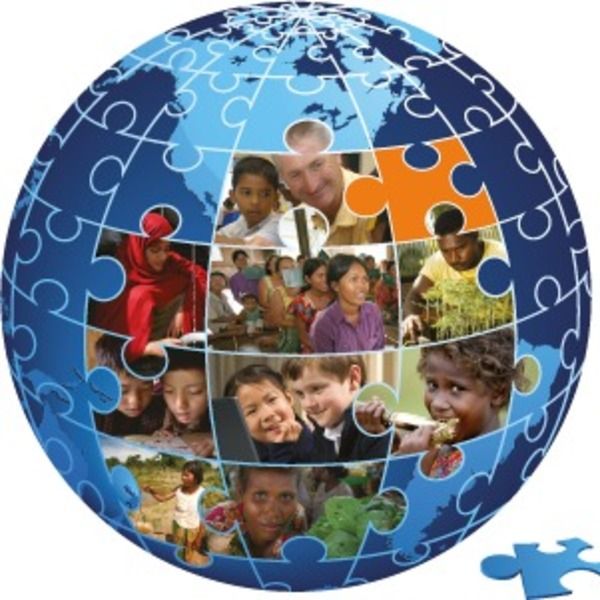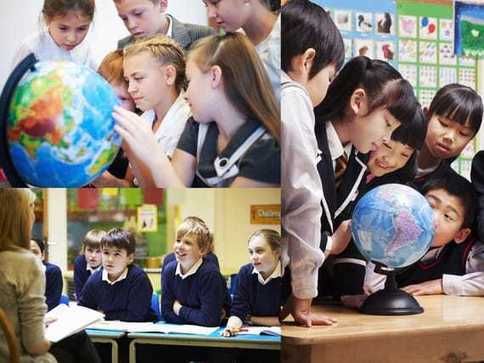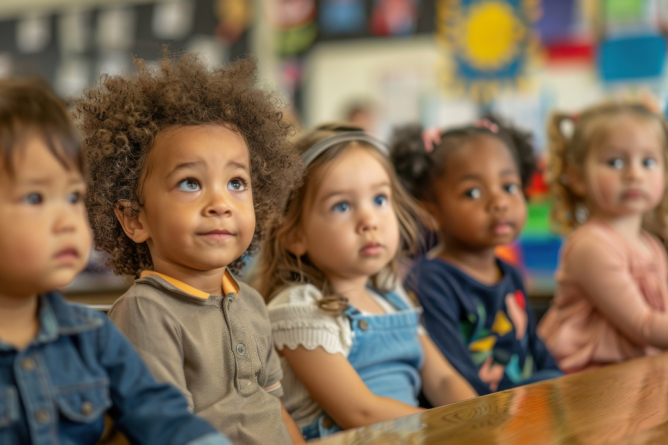
Global Education Reform Insights
The landscape of global education is perpetually shifting, driven by an urgent need to adapt to a rapidly changing world. Traditional pedagogical models, once the bedrock of learning, are increasingly challenged by technological advancements, evolving job markets, and the imperative for critical thinking in an interconnected society. For nations worldwide, education reform isn’t merely an academic exercise; it’s a strategic imperative to foster economic growth, social equity, and future-ready citizens. Understanding the nuanced approaches, successes, and ongoing challenges in this complex domain offers invaluable insights for policymakers, educators, and parents alike. This makes “global education reform” a highly sought-after topic, crucial for generating significant Google AdSense revenue through comprehensive, authoritative, and engaging content that appeals to a broad, globally conscious audience. This extensive article will dissect the core drivers of education reform, explore innovative strategies being implemented worldwide, analyze the impact of technology, and discuss the critical challenges and future directions for building truly transformative learning environments.
Drivers of Education Reform: Why Change is Essential
The impetus for education reform stems from a confluence of powerful global and local forces that are fundamentally reshaping the demands on individuals and societies. The outdated “factory model” of education, designed for industrial-era economies, is no longer sufficient to equip learners for the complexities of the 21st century.
A. The Fourth Industrial Revolution and Future Skills
The rapid advancements in artificial intelligence, automation, biotechnology, and other disruptive technologies (the Fourth Industrial Revolution) are fundamentally altering the nature of work. This necessitates a shift in educational priorities from rote memorization to skills that machines cannot easily replicate.
- Critical Thinking and Problem-Solving: The ability to analyze complex situations, identify root causes, and devise innovative solutions is paramount.
- Creativity and Innovation: Fostering original thought and the capacity to generate new ideas and approaches.
- Digital Literacy and Fluency: Beyond basic computer skills, this involves understanding computational thinking, data analysis, and the ethical implications of technology.
- Communication and Collaboration: Effective interpersonal skills, including teamwork, empathy, and cross-cultural understanding.
- Adaptability and Resilience: The capacity to navigate uncertainty, embrace change, and learn continuously throughout life.
Education systems must evolve to cultivate these “soft” or “21st-century skills” alongside traditional academic knowledge.
B. Globalization and Interconnectedness
An increasingly interconnected world demands citizens who can understand and navigate diverse cultures, global challenges, and complex interdependencies. Education must foster global citizenship.
- Cultural Competence: Understanding and respecting diverse perspectives, customs, and values.
- Global Awareness: Knowledge of global issues such as climate change, poverty, human rights, and geopolitical dynamics.
- Multilingualism: The ability to communicate in multiple languages enhances cross-cultural collaboration.
- Digital Citizenship: Responsible and ethical engagement in digital spaces, understanding global digital footprints.
C. Equity and Inclusion
Persistent disparities in educational access and outcomes, often linked to socioeconomic status, geography, gender, or disability, demand systemic reform to ensure every learner has the opportunity to succeed.
- Access to Quality Education: Ensuring all children, regardless of background, have access to well-resourced schools and qualified teachers.
- Inclusive Learning Environments: Adapting curricula and pedagogical practices to support learners with diverse needs and learning styles.
- Addressing Digital Divides: Bridging the gap in access to technology and internet connectivity, which disproportionately affects marginalized communities.
- Reducing Achievement Gaps: Implementing targeted interventions and support systems to close performance disparities between different student groups.
D. Well-being and Mental Health
A growing recognition that education is not solely about academic achievement but also about fostering the holistic well-being of students. Stress, anxiety, and mental health challenges among students are prompting calls for more supportive and trauma-informed educational environments.
- Social-Emotional Learning (SEL): Integrating curricula that teach self-awareness, self-management, social awareness, relationship skills, and responsible decision-making.
- Safe and Supportive Environments: Creating school cultures free from bullying and discrimination, where students feel valued and secure.
- Mental Health Resources: Providing access to counseling, support services, and trained staff to address student mental health needs.
Innovative Strategies in Global Education Reform
Nations across the globe are experimenting with diverse and innovative approaches to reform their education systems, learning from both successes and failures.
A. Curriculum Modernization and Competency-Based Learning
Moving away from rigid, content-heavy curricula towards flexible, competency-based frameworks.
- Interdisciplinary Learning: Breaking down traditional subject silos to connect knowledge across disciplines, reflecting real-world problem-solving.
- Project-Based Learning (PBL): Students engage in extended projects that require deep inquiry, critical thinking, collaboration, and presentation of solutions to real-world problems. This often integrates multiple subjects.
- Personalized Learning Pathways: Tailoring education to individual student needs, interests, and pace, often leveraging technology. This can involve adaptive software, individualized assignments, and flexible grouping.
- Competency-Based Progression: Students advance based on demonstrated mastery of skills and knowledge, rather than simply seat time or age. This allows for accelerated learning or additional support as needed.
- Emphasis on “Soft Skills”: Explicitly integrating the teaching and assessment of communication, collaboration, creativity, and critical thinking throughout the curriculum.
B. Teacher Professional Development and Support
Recognizing that effective reform hinges on the capacity and motivation of teachers.
- Continuous Professional Learning: Providing ongoing, high-quality training and development opportunities focused on new pedagogies, technology integration, and student well-being.
- Mentorship Programs: Pairing experienced teachers with new educators to facilitate knowledge transfer and provide support.
- Collaborative Learning Communities: Creating opportunities for teachers to share best practices, problem-solve, and learn from peers within and across schools.
- Increased Teacher Autonomy and Voice: Empowering teachers to adapt curricula, experiment with new methods, and contribute to school-wide decision-making.
- Competitive Compensation and Recognition: Attracting and retaining top talent through fair salaries and public recognition of the teaching profession’s value.
C. Leveraging Technology for Learning Transformation
Technology is not merely a tool but a catalyst for fundamental shifts in educational delivery and access.
- Blended Learning Models: Combining traditional face-to-face instruction with online learning components, allowing for flexibility and personalized pacing.
- Adaptive Learning Platforms: AI-powered software that adjusts the content and pace of learning based on individual student performance, providing targeted feedback and remediation.
- Virtual Reality (VR) and Augmented Reality (AR): Creating immersive learning experiences that allow students to explore historical sites, conduct virtual science experiments, or practice complex procedures in a safe environment.
- Gamification: Integrating game-like elements (points, badges, leaderboards) into learning to increase engagement, motivation, and problem-solving skills.
- Open Educational Resources (OER): Freely accessible, high-quality educational materials that can democratize access to knowledge and reduce costs.
- Learning Analytics: Using data collected from educational platforms to understand student engagement, identify struggling learners, and personalize interventions.
D. Rethinking Assessment and Evaluation
Shifting from high-stakes, standardized tests to more holistic and authentic assessments that truly measure learning outcomes and 21st-century skills.
- Formative Assessment: Ongoing assessment for learning, providing continuous feedback to guide instruction and student progress.
- Performance-Based Assessment: Evaluating students’ ability to apply knowledge and skills to real-world tasks and problems (e.g., presentations, portfolios, projects).
- Digital Portfolios: Collecting student work over time to showcase growth, diverse talents, and reflections on learning.
- Peer and Self-Assessment: Empowering students to evaluate their own and their peers’ work, fostering critical thinking and self-reflection.
- Reduced Emphasis on Rote Memorization: Shifting focus from recall to higher-order thinking skills in evaluations.
E. Community and Parental Engagement
Recognizing that education is a shared responsibility involving families and the broader community.
- Parental Involvement Programs: Developing strategies to actively involve parents in their children’s learning journey, providing resources and communication channels.
- School-Community Partnerships: Collaborating with local businesses, non-profits, universities, and cultural institutions to offer enriched learning opportunities, mentorships, and real-world connections.
- Community Learning Hubs: Schools serving as centers for wider community learning, offering adult education, workshops, and shared resources.
- Strengthening Home-School Communication: Utilizing technology and personalized approaches to foster consistent and meaningful dialogue between educators and families.
Global Case Studies: Lessons from Leading Reforms
Examining specific examples from around the world provides concrete insights into the varied approaches and impacts of education reform efforts.
A. Finland: High Autonomy, High Trust
Finland consistently ranks among the top education systems globally. Their reform success is often attributed to:
- Highly Valued Teachers: Teaching is a prestigious profession, attracting top graduates, requiring a Master’s degree, and offering high autonomy in the classroom.
- Holistic Approach: Focus on well-being, play-based learning in early years, and reduced homework.
- No Standardized Testing (initially): Minimal high-stakes testing, focusing on teacher-led formative assessment.
- Equity: All schools are publicly funded and high quality, minimizing achievement gaps based on socioeconomic status.
- Child-Centered Learning: Emphasis on problem-solving, critical thinking, and student-driven inquiry.
B. Singapore: Meritorcracy with Holistic Development
Singapore’s system is known for its rigor and academic excellence, combined with recent shifts towards broader skills.
- Teacher Quality: Highly selective recruitment, rigorous training, and continuous professional development for teachers.
- Curriculum Review: Regular updates to the curriculum to align with future skills, including a focus on computational thinking and bilingualism.
- “Teach Less, Learn More”: A policy aiming to reduce content overload and encourage deeper understanding, critical thinking, and independent learning.
- Applied Learning: Greater emphasis on vocational and technical education pathways, and integrating real-world applications into academic subjects.
- Values-Based Education: Incorporating character development, civic responsibility, and social-emotional learning.
C. Estonia: Digital First and Equity
Estonia has rapidly become a digital education leader, focusing on leveraging technology for equitable access and personalized learning.
- Digital Infrastructure: Early and widespread investment in digital infrastructure and e-governance, including in schools.
- Digital Competence: Digital skills are integrated across all subjects from an early age, not just as a separate IT class.
- Teacher Empowerment: High teacher autonomy and support for continuous digital pedagogical training.
- Free Education: All levels of education are free, reducing socioeconomic barriers.
- Personalized Learning: Emphasis on using technology to create individualized learning paths and provide adaptive feedback.
D. Canada: Decentralized Excellence with Equity Focus
Canada’s decentralized system (provinces manage education) often performs well due to a strong focus on equity and support for diverse learners.
- Equity and Inclusion: Strong emphasis on providing resources and support for students from diverse backgrounds, including Indigenous students and new immigrants.
- Teacher Professionalism: Valued teaching profession with strong professional development structures.
- Balance: A balance between academic rigor and holistic development, including a focus on social-emotional learning.
- Curriculum Adaptability: Provinces can adapt curricula to local contexts and needs.
Challenges and Roadblocks in Education Reform

Despite innovative efforts, education reform faces significant hurdles that require thoughtful and persistent navigation.
A. Resistance to Change
Education systems are often deeply entrenched, making fundamental reform difficult.
- Teacher Reluctance: Resistance due to unfamiliarity with new pedagogies, increased workload, or skepticism about effectiveness.
- Parental Concerns: Fear of change, preference for traditional methods, or concerns about standardized test scores.
- Bureaucracy and Inertia: Large educational institutions can be slow to adapt due to complex administrative structures and established routines.
- Political Will: Sustaining long-term reform efforts requires consistent political commitment across different administrations.
B. Funding and Resources
Implementing meaningful reform often requires significant financial investment, which can be a major barrier, especially in developing nations.
- Teacher Salaries and Training: Investing in competitive salaries and high-quality professional development.
- Technology Infrastructure: Costs associated with hardware, software, internet access, and maintenance, particularly in rural or low-income areas.
- Curriculum Development: Resources needed to research, design, and implement new, modernized curricula.
- Support Services: Funding for counselors, special education, and other student support systems.
C. Assessment and Accountability Mismatch
The tension between a desire for holistic, 21st-century skills and the continued reliance on high-stakes, standardized tests often hinders true reform.
- “Teaching to the Test”: Pressure to perform on narrow standardized tests can lead schools to prioritize rote learning over deeper understanding or skill development.
- Measuring Soft Skills: Developing reliable and valid ways to assess creativity, collaboration, and critical thinking remains a challenge.
- Equity in Assessment: Ensuring that assessments are fair and unbiased across diverse student populations.
D. Digital Divide and Infrastructure Gaps
While technology offers immense potential, unequal access remains a significant barrier to equitable reform.
- Access to Devices and Internet: Disparities exist between urban and rural areas, and between wealthy and disadvantaged students.
- Teacher Digital Competence: Not all teachers are adequately trained or comfortable using technology effectively for instruction.
- Maintenance and Support: Ensuring ongoing technical support and infrastructure upgrades for sustained technology integration.
E. Social and Cultural Contexts
Education systems are deeply embedded in societal values, traditions, and cultural norms, which can influence reform efforts.
- Parental Expectations: Cultural preferences for certain types of academic rigor or traditional teaching methods.
- Societal Value of Education: How a society values teachers and education in general impacts investment and public support for reform.
- Language Barriers: In multilingual societies, ensuring equitable access to quality instruction for all language groups.
The Future of Global Education: Towards a Learner-Centric Ecosystem
Looking ahead, the trajectory of global education reform points towards creating highly adaptable, inclusive, and learner-centric ecosystems that prioritize holistic development and lifelong learning.
A. Personalized and Adaptive Learning Dominance
Technology will enable increasingly personalized learning experiences, tailoring content, pace, and style to individual student needs and preferences, moving away from a “one-size-fits-all” model.
B. Blended and Hybrid Learning as the New Norm
The distinction between online and offline learning will continue to blur, with flexible, hybrid models becoming standard, offering greater access and resilience to disruptions.
C. Emphasis on Experiential and Project-Based Learning
Learning will become more hands-on, relevant, and interdisciplinary, with real-world projects and problem-solving at its core.
D. Lifelong Learning Ecosystems
The concept of education will extend beyond formal schooling, encompassing continuous learning opportunities throughout adulthood, driven by rapid technological change and evolving career paths. Schools may become lifelong learning hubs.
E. AI as a Learning Assistant, Not a Replacement
Artificial intelligence will play an increasing role in personalizing learning, providing intelligent tutoring, and automating administrative tasks, freeing up teachers to focus on mentorship and higher-order skill development. AI won’t replace teachers, but teachers who use AI will replace those who don’t.
F. Global Collaboration and Knowledge Sharing
Nations will increasingly collaborate, sharing best practices, research, and open educational resources to collectively address global educational challenges and accelerate reform efforts.
Shaping Minds, Shaping Futures

Global education reform is not a singular event but an ongoing, complex, and vital process that is fundamentally reshaping how humanity learns and adapts. Driven by the demands of the 21st century, it necessitates a shift from passive knowledge consumption to active skill development, from standardized approaches to personalized pathways, and from isolated learning to interconnected ecosystems. While challenges persist—from funding constraints and resistance to change to the complexities of the digital divide—the innovative strategies emerging worldwide offer powerful blueprints for progress. By prioritizing adaptive curricula, empowering highly skilled teachers, thoughtfully integrating technology, and fostering genuine community engagement, education systems can evolve to prepare every individual not just for existing jobs, but for unforeseen futures. Investing in this reform is an investment in human potential, societal resilience, and global prosperity, making it a perpetually relevant and high-value topic for driving online engagement and maximizing reach. The future of our world hinges on the efficacy and inclusivity of our educational systems.

